
The Heartbeat of Arequipa: Historic Centre
Discover the charm of Arequipa's Historic Centre, where colonial elegance meets vibrant Peruvian culture, all set against the backdrop of stunning volcanic landscapes.
The Historic Centre of Arequipa is a treasure trove of colonial architecture and vibrant culture, nestled in the shadow of three towering volcanoes. Known as the 'White City' due to its stunning sillar stone buildings, this UNESCO World Heritage Site offers a unique blend of history, tradition, and modernity. Wander through the cobblestone streets and marvel at the majestic churches, monasteries, and mansions that date back to the 16th century. The Plaza de Armas, the heart of the city, is a bustling square surrounded by beautiful arcades and the imposing Cathedral Basilica of Arequipa. It's the perfect spot to sit back, enjoy a coffee, and soak in the lively atmosphere. Don't miss the Santa Catalina Monastery, a sprawling convent that feels like a city within a city, with its vividly painted walls and serene courtyards. For a deeper dive into the local culture, visit the Museo Santuarios Andinos, home to the famous mummy Juanita, a well-preserved Inca maiden. The Historic Centre is also a culinary delight, with numerous restaurants offering traditional Peruvian dishes. Be sure to try the local specialty, rocoto relleno, a spicy stuffed pepper that will tantalize your taste buds. As day turns into night, the area comes alive with music and dance, offering a glimpse into the vibrant nightlife of Arequipa.
Local tips in Historic Centre of Arequipa
- Wear comfortable shoes for walking on the cobblestone streets.
- Visit early in the morning or late in the afternoon to avoid the midday heat.
- Take a guided tour to fully appreciate the historical significance of the buildings.
- Don't forget to try the local specialty, rocoto relleno, at a traditional restaurant.
- Carry some cash, as some smaller shops and eateries may not accept credit cards.
The Heartbeat of Arequipa: Historic Centre
The Historic Centre of Arequipa is a treasure trove of colonial architecture and vibrant culture, nestled in the shadow of three towering volcanoes. Known as the 'White City' due to its stunning sillar stone buildings, this UNESCO World Heritage Site offers a unique blend of history, tradition, and modernity. Wander through the cobblestone streets and marvel at the majestic churches, monasteries, and mansions that date back to the 16th century. The Plaza de Armas, the heart of the city, is a bustling square surrounded by beautiful arcades and the imposing Cathedral Basilica of Arequipa. It's the perfect spot to sit back, enjoy a coffee, and soak in the lively atmosphere. Don't miss the Santa Catalina Monastery, a sprawling convent that feels like a city within a city, with its vividly painted walls and serene courtyards. For a deeper dive into the local culture, visit the Museo Santuarios Andinos, home to the famous mummy Juanita, a well-preserved Inca maiden. The Historic Centre is also a culinary delight, with numerous restaurants offering traditional Peruvian dishes. Be sure to try the local specialty, rocoto relleno, a spicy stuffed pepper that will tantalize your taste buds. As day turns into night, the area comes alive with music and dance, offering a glimpse into the vibrant nightlife of Arequipa.
Iconic landmarks you can’t miss
Plaza de Armas Arequipa
Discover the charm of Plaza de Armas Arequipa, a historical landmark bursting with culture, stunning architecture, and a vibrant atmosphere in the heart of the city.

Yanahuara Scenic Overlook
Experience the stunning vistas of the Yanahuara Scenic Overlook, a captivating blend of nature and culture in Arequipa, Peru.

Santa Catalina Monastery
Explore Santa Catalina Monastery in Arequipa, a stunning historical site showcasing vibrant colonial architecture and rich cultural heritage.

Puente Grau
Experience the stunning views and rich history of Puente Grau, Arequipa's iconic bridge and a must-visit tourist attraction.

Cloisters of The Company
Explore the serene Cloisters of The Company in Arequipa, where stunning Baroque architecture meets tranquil gardens, perfect for cultural immersion.

Basilica Cathedral of Arequipa
Explore the Basilica Cathedral of Arequipa, a stunning architectural gem in the heart of Peru's beautiful white city, rich in history and cultural significance.
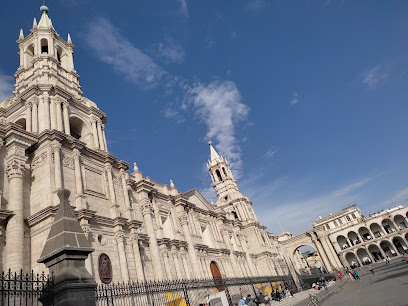
Mundo Alpaca
Experience the luxurious world of Peruvian alpaca at Mundo Alpaca, a must-visit boutique and cultural landmark in Arequipa.

La Mansión del Fundador
Experience the unique blend of adventure, culture, and tranquility at La Mansión del Fundador, a remarkable venue in Jacobo Hunter, Peru.
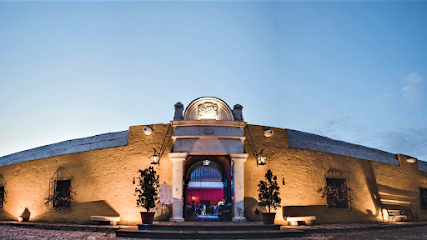
Museo Santuarios Andinos
Explore the captivating Museo Santuarios Andinos, home to stunning artifacts and the famous ice mummy 'Juanita' in Arequipa, Peru.

Free Tour Downtown Arequipa
Discover the vibrant culture and stunning architecture of Arequipa on a free guided tour through its historic downtown streets.

Museum of Virreinal Art Santa Teresa
Explore the rich colonial history of Peru at the Museum of Virreinal Art Santa Teresa, a cultural gem in Arequipa filled with exquisite artworks.

Monasterio y Museo de la Recoleta
Explore the serene Monasterio y Museo de la Recoleta in Arequipa, a perfect blend of tranquility, history, and artistic heritage.

Cathedral Museum
Explore Arequipa's Cathedral Museum, where art and history intertwine in the heart of Peru's beautiful colonial capital.

Museo Histórico Municipal Guillermo Zegarra Meneses
Explore the fascinating history of Arequipa at Museo Histórico Municipal Guillermo Zegarra Meneses, a captivating history museum with diverse exhibits.
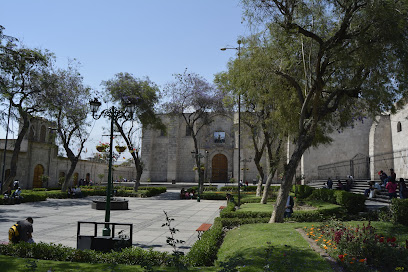
Casona Tristan del Pozo
Explore the colonial elegance of Casona Tristan del Pozo, a historic mansion in Arequipa showcasing stunning architecture and rich cultural heritage.

Unmissable attractions to see
Museum of Virreinal Art Santa Teresa
Explore the Museum of Virreinal Art Santa Teresa in Arequipa, a treasure trove of colonial art and history showcasing Peru's rich cultural heritage.

Casa Museo Mario Vargas Llosa
Delve into the literary world of Mario Vargas Llosa at this captivating museum in Arequipa, celebrating the legacy of the Nobel Prize-winning author.

Essential places to dine
Tipika Tourist Restaurant
Experience authentic Peruvian cuisine at Tipika Tourist Restaurant in Arequipa - where tradition meets flavor in every dish.

Zig Zag
Experience authentic Peruvian cuisine at Zig Zag in Arequipa – where tradition meets innovation in every dish.

Chicha por Gaston Acurio
Experience the best of Peruvian cuisine at Chicha por Gaston Acurio in Arequipa, where tradition meets modern culinary artistry.

13 MONJAS
Discover the vibrant flavors of Peru at 13 Monjas – where tradition meets modern cuisine in Arequipa's lively atmosphere.

Tanta
Experience authentic Peruvian cuisine in Arequipa at Tanta - where tradition meets flavor in every dish.

Zingaro Restaurante
Experience authentic Peruvian flavors at Zingaro Restaurante in Arequipa – where every dish tells a story.

MUMIS
Discover MUMIS: A fusion of Italian cuisine and Peruvian flavors in the heart of Arequipa's vibrant dining scene.

Claustro
Experience the rich flavors of traditional Peruvian cuisine at Claustro in Arequipa's charming ambiance.

La Boveda
Experience authentic Peruvian flavors at La Boveda in Arequipa – where every dish tells a story.

Sonccollay Pre Inka Cuisine
Experience the essence of ancient Peruvian flavors at Sonccollay Pre Inka Cuisine in Arequipa's historic Plaza de Armas.

Markets, malls and hidden boutiques
Parque Lambramani
Explore Parque Lambramani, Arequipa's bustling shopping mall with diverse shops, delicious dining, and vibrant entertainment experiences.

Mundo Alpaca
Discover the luxury of alpaca fiber at Mundo Alpaca, Arequipa's premier boutique offering exquisite clothing and a glimpse into Peruvian heritage.

Puku Puku Arequipa
Experience the rich flavors of Arequipa at Puku Puku, a charming coffee shop offering artisanal brews and delightful pastries in a cozy setting.

TIENDA DE REGALOS IMÁGENES
Discover unique souvenirs and local crafts at Tienda de Regalos Imágenes, the ultimate gift shop in Arequipa, Peru.

Galería Colonial
Explore Galería Colonial in Arequipa for unique handicrafts, local art, and an immersive cultural experience.
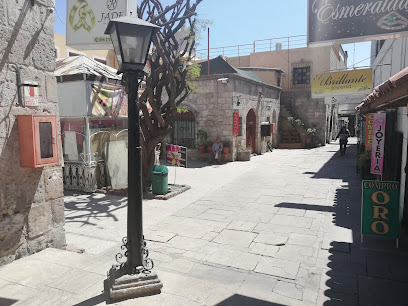
Akira Otaku Shop
Explore Akira Otaku Shop: your ultimate destination for anime collectibles, custom apparel, and delightful Japanese sweets in Arequipa.

Abylu Store
Discover stylish women's fashion at Abylu Store in Arequipa, blending local artistry with modern trends for a unique shopping experience.

Regalos Arequipa
Discover unique gifts at Regalos Arequipa, where local craftsmanship meets the heart of beautiful Yanahuara.

El Fundito Artesanias
Explore the vibrant world of Peruvian handicrafts at El Fundito Artesanias, where local artistry meets unforgettable souvenirs.

Chibi Kawaii Store
Discover the whimsical world of Chibi Kawaii Store in Arequipa, where cute meets culture in an unforgettable shopping experience.
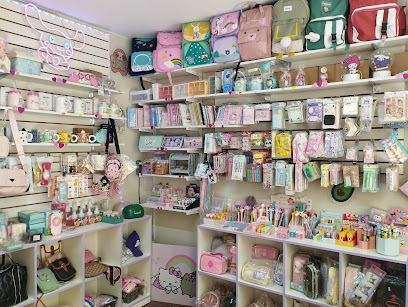
Essential bars & hidden hideouts
Museo del Pisco AQP
Experience the essence of Peru at Museo del Pisco AQP, where Pisco comes alive in a lively cocktail bar and restaurant setting.

Chelawasi Public House
Discover Arequipa's craft beer culture and artisanal espresso at Chelawasi Public House, a must-visit bar for tourists seeking local flavors.

Qochamama
Discover Qochamama, Arequipa's vibrant grill and bar offering authentic Peruvian flavors in a lively setting perfect for tourists.

Nowhere
Explore Nowhere in Arequipa for an authentic brewpub experience featuring local craft beers and delicious pub fare, perfect for socializing.

7 Vidas Taproom AQP
Experience the vibrant culture and local flavors at 7 Vidas Taproom AQP, where craft beers and delicious food come together in Arequipa.
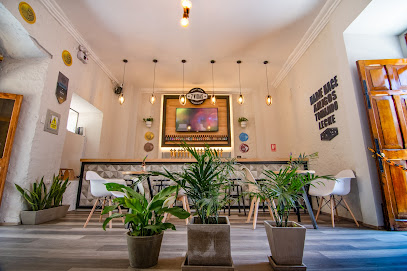
Chancho Cojo Tap Room
Experience the unique taste of Arequipa at Chancho Cojo Tap Room, where craft ciders meet delicious food in a vibrant atmosphere.

Pataccala Bar
Experience the vibrant flavors of Peru at Pataccala Bar, a top-rated tapas bar and brewery in Arequipa, perfect for food lovers and craft beer enthusiasts.
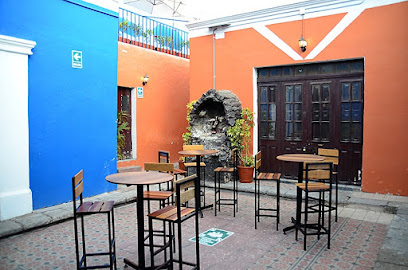
VOITON bar & live sports
Experience the vibrant atmosphere of VOITON Bar & Live Sports in Arequipa, where delicious burgers, cocktails, and live sports create unforgettable moments.

LUCKY AND CRAZY Beer and grill
Experience Arequipa's vibrant dining scene at LUCKY AND CRAZY Beer and Grill, where delicious grilled dishes meet local craft beers in a lively atmosphere.
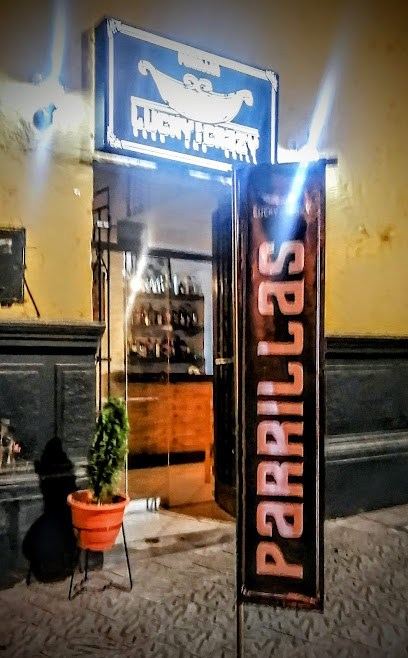
The House of Encuentro
Discover the vibrant flavors of Arequipa at The House of Encuentro, where expertly grilled dishes and a warm atmosphere await you.
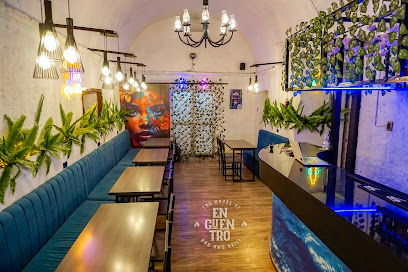
Local Phrases
-
- HelloHola
[oh-la] - GoodbyeAdiós
[ah-dee-ohs] - YesSí
[see] - NoNo
[no] - Please/You're welcomePor favor/De nada
[por fah-vor/de nah-dah] - Thank youGracias
[grah-see-ahs] - Excuse me/SorryPerdón/Lo siento
[pair-dohn/loh see-en-toh] - How are you?¿Cómo estás?
[koh-moh ehs-tahs] - Fine. And you?Bien. ¿Y tú?
[bee-ehn. ee too] - Do you speak English?¿Hablas inglés?
[ah-blahs een-glays] - I don't understandNo entiendo
[noh ehn-tee-ehn-doh]
- HelloHola
-
- I'd like to see the menu, pleaseQuisiera ver el menú, por favor
[kee-see-eh-rah ver el meh-noo, por fah-vor] - I don't eat meatNo como carne
[noh koh-moh kahr-neh] - Cheers!¡Salud!
[sah-lood] - I would like to pay, pleaseQuisiera pagar, por favor
[kee-see-eh-rah pah-gar, por fah-vor]
- I'd like to see the menu, pleaseQuisiera ver el menú, por favor
-
- Help!¡Ayuda!
[ah-yoo-dah] - Go away!¡Vete!
[veh-teh] - Call the Police!¡Llama a la policía!
[yah-mah ah lah poh-lee-see-ah] - Call a doctor!¡Llama a un médico!
[yah-mah ah oon meh-dee-koh] - I'm lostEstoy perdido/a
[ehs-toy pair-dee-doh/ah] - I'm illEstoy enfermo/a
[ehs-toy ehn-fehr-moh/ah]
- Help!¡Ayuda!
-
- I'd like to buy...Me gustaría comprar...
[meh goos-tah-ree-ah kohm-prahr...] - I'm just lookingSólo estoy mirando
[soh-loh ehs-toy mee-rahn-doh] - How much is it?¿Cuánto cuesta?
[kwan-toh kwehs-tah] - That's too expensiveEso es muy caro
[eh-soh es mwee kah-roh] - Can you lower the price?¿Puedes rebajar el precio?
[pweh-dehs reh-bah-har el pree-seh-oh]
- I'd like to buy...Me gustaría comprar...
-
- What time is it?¿Qué hora es?
[keh oh-rah es] - It's one o'clockEs la una
[ehs lah oo-nah] - Half past (10)Las diez y media
[lahs dyehs ee meh-dee-ah] - MorningMañana
[mah-nyah-nah] - AfternoonTarde
[tahr-deh] - EveningNoche
[noh-cheh] - YesterdayAyer
[ah-yehr] - TodayHoy
[oy] - TomorrowMañana
[mah-nyah-nah] - 1Uno
[oo-noh] - 2Dos
[dohs] - 3Tres
[trehs] - 4Cuatro
[kwah-troh] - 5Cinco
[seen-koh] - 6Seis
[says] - 7Siete
[syeh-teh] - 8Ocho
[oh-choh] - 9Nueve
[nweh-veh] - 10Diez
[dyehs]
- What time is it?¿Qué hora es?
-
- Where's a/the...?¿Dónde está...?
[dohn-deh ehs-tah] - What's the address?¿Cuál es la dirección?
[kwahl ehs lah dee-rehk-syon] - Can you show me (on the map)?¿Puedes mostrarme (en el mapa)?
[pweh-dehs mohs-trar-meh (ehn el mah-pah)] - When's the next (bus)?¿Cuándo es el próximo (autobús)?
[kwan-doh ehs ehl proh-see-moh (ow-toh-boos)] - A ticket (to ....)Un boleto (a ...)
[oon boh-leh-toh (ah ...)]
- Where's a/the...?¿Dónde está...?
History of Historic Centre of Arequipa
-
Founded on August 15, 1540, by Spanish conquistador Garcí Manuel de Carvajal, Arequipa emerged as a key city in colonial Peru. Its strategic location near important trade routes and its proximity to the Andes Mountains facilitated its growth and development. Initially named 'Villa de Arequipa', the city was established in a region populated by the indigenous Quechua people, and its foundation marked the beginning of significant cultural and economic exchanges between Spanish colonizers and local communities.
-
The Historic Centre of Arequipa is renowned for its stunning colonial architecture, largely constructed in the 18th century using sillar, a white volcanic stone. This period saw the rise of Baroque and neoclassical styles, with notable buildings such as the Cathedral of Arequipa and the Church of La Compañía de Jesús. The unique construction techniques and artistic expressions reflect a blend of European influences and local traditions, making Arequipa a distinctive example of colonial architecture in Peru.
-
In 1857, Arequipa was the site of a significant rebellion against the central government which was perceived as corrupt and ineffective. The uprising was led by local elites who sought greater autonomy for the region. This event highlighted the historical tensions between the central government in Lima and the provinces, particularly in regions like Arequipa that had developed their own distinct identities and economic interests.
-
Throughout the 19th and 20th centuries, the people of Arequipa cultivated a strong cultural identity, characterized by a rich tradition of art, literature, and gastronomy. The city became known for its intellectual movements and the establishment of cultural institutions, such as the Universidad Nacional de San Agustín. Arequipeños take pride in their regional distinctiveness, often expressed through festivals, music, and the renowned local cuisine, which features dishes like rocoto relleno and adobo arequipeño.
-
In 2000, the Historic Centre of Arequipa was designated a UNESCO World Heritage Site. This recognition was granted due to its exceptional architectural heritage, which reflects the blend of European and indigenous influences. The designation has helped to promote the preservation of Arequipa's historic buildings and the ongoing efforts to maintain the cultural vitality of the city, while also enhancing its profile as a tourist destination.
Historic Centre of Arequipa Essentials
-
The Historic Centre of Arequipa is accessible from various neighborhoods in Arequipa, with the most common means being taxis and local buses. Taxis are widely available and relatively inexpensive, making them a convenient option for direct travel. Local buses also connect the Historic Centre to neighborhoods like Yanahuara and Cayma. Alternatively, if you are arriving from the airport, a taxi ride will take approximately 20 minutes to reach the Historic Centre.
-
The Historic Centre of Arequipa is best explored on foot due to its compact size and pedestrian-friendly streets. Many attractions, such as the Santa Catalina Monastery and Plaza de Armas, are within walking distance of each other. For longer distances, local taxis are available, and you can also rent bicycles from various shops in the area. Public buses are available but are less commonly used by tourists.
-
The Historic Centre of Arequipa is generally a safe area for tourists, but standard precautions should be taken. Petty crime, such as pickpocketing, can occur, especially in crowded areas. Avoid walking alone at night in less populated areas. The neighborhoods of La Pampa and some parts of Varas are known for higher crime rates, and it is advisable to be vigilant in these locations.
-
In case of an emergency, dial 105 for police assistance or 116 for medical emergencies in Peru. The main hospital in Arequipa is the Honorio Delgado Hospital, which can be reached by taxi. It is advisable to have travel insurance that includes medical coverage. For minor health issues, pharmacies are readily available throughout the Historic Centre.
-
Fashion: Do dress modestly, especially when visiting religious sites. Avoid wearing shorts or revealing clothing in such places. Religion: Do respect local customs and traditions, including silence and reverence in churches. Public Transport: Do be respectful and give up your seat to elderly passengers. Don't eat or drink on public transport. Greetings: Do greet with a friendly handshake and be polite. Eating & Drinking: Do try local dishes such as rocoto relleno and chupe de camarones. Don't waste food or refuse hospitality, as it may offend your hosts.
-
To experience the Historic Centre like a local, visit the Mercado San Camilo for fresh produce and local specialties. Engage with locals in cafés and plazas, where conversations often lead to interesting insights about Arequipa's culture and history. To appreciate the local architecture, take a stroll in the evening when the buildings are beautifully illuminated. Don't forget to try an 'Arequipeño' coffee at one of the local cafés for an authentic taste of the region.
Trending Landmarks in Historic Centre of Arequipa
-
Plaza de Armas Arequipa
-
Yanahuara Scenic Overlook
-
Santa Catalina Monastery
-
Puente Grau
-
Cloisters of The Company
-
Basilica Cathedral of Arequipa
-
Mundo Alpaca
-
La Mansión del Fundador
-
Museo Santuarios Andinos
-
Free Tour Downtown Arequipa
-
Museum of Virreinal Art Santa Teresa
-
Monasterio y Museo de la Recoleta
-
Cathedral Museum
-
Museo Histórico Municipal Guillermo Zegarra Meneses
-
Casona Tristan del Pozo
Nearby Cities to Historic Centre of Arequipa
-
Things To Do in Puno
-
Things To Do in Tacna
-
Things To Do in Copacabana
-
Things To Do in Arica
-
Things To Do in Cusco
-
Things To Do in La Paz
-
Things To Do in Machu Picchu
-
Things To Do in Iquique
-
Things To Do in Ayacucho
-
Things To Do in Ica
-
Things To Do in Cochabamba
-
Things To Do in Huancayo
-
Things To Do in Uyuni
-
Things To Do in Potosi
-
Things To Do in Sucre











